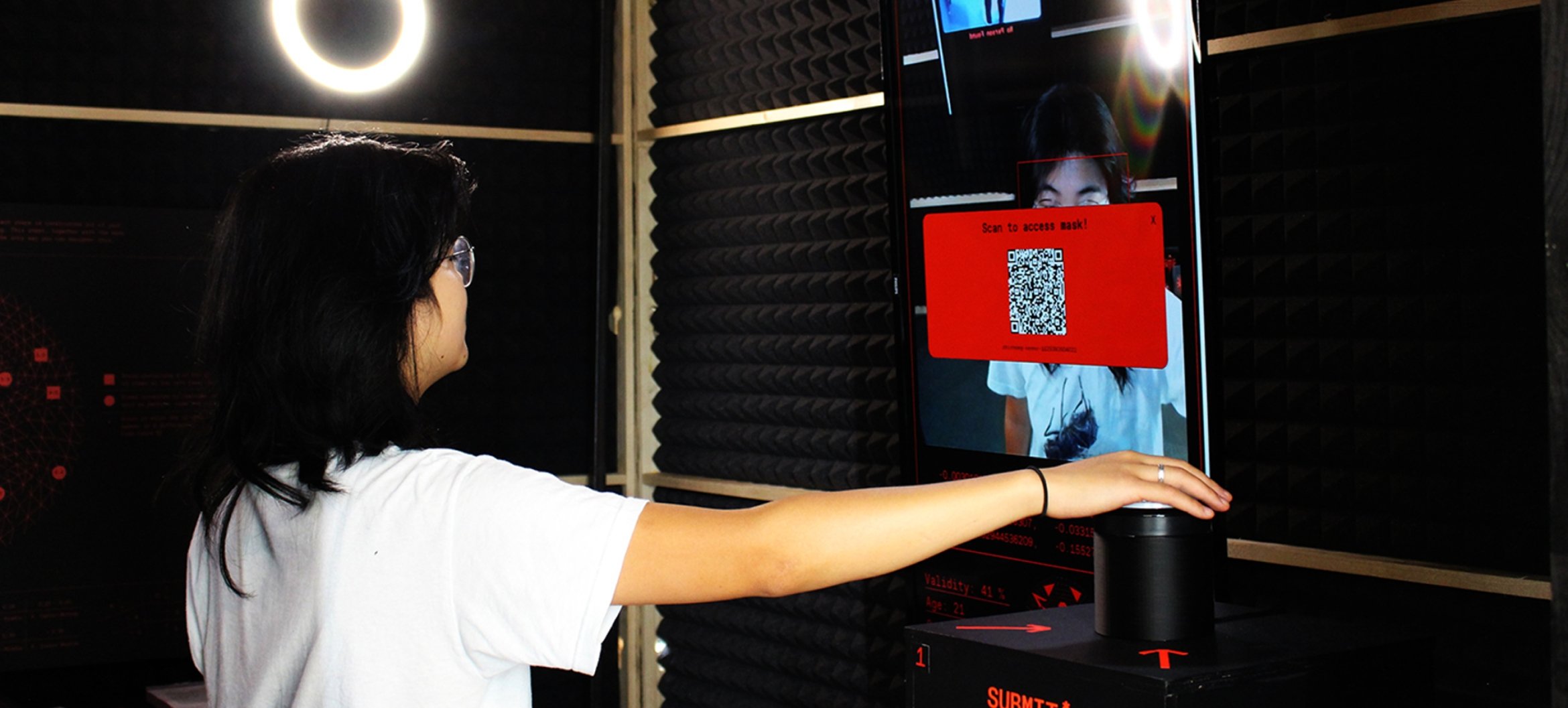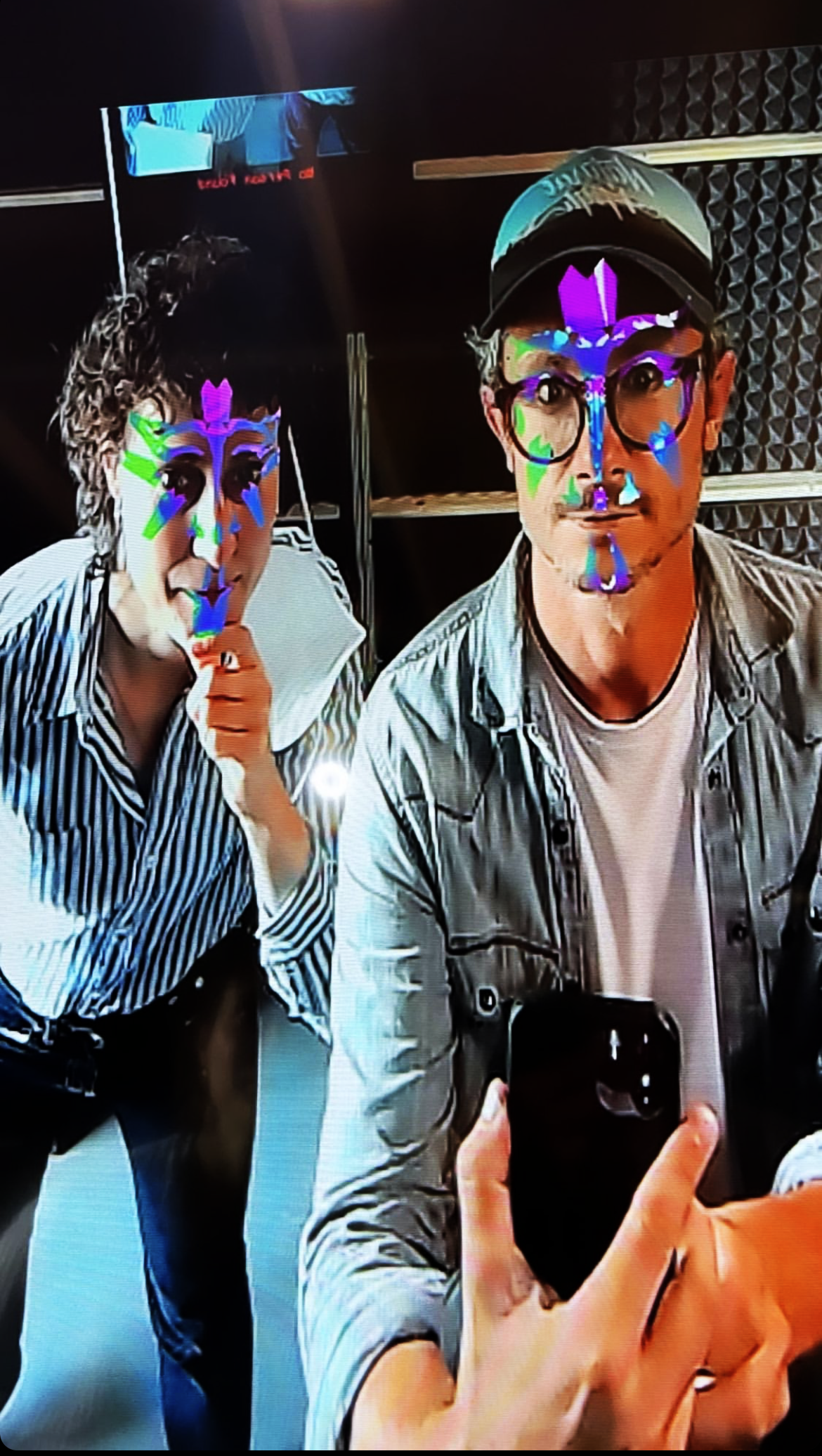Invisibility mask becomes reality
- Design
An algorithm that enables you to disguise yourself digitally... Not the first thing you'd think of in connection with Graphic Design, but it’s a good example of the possibilities offered by this bachelor course at ArtEZ. Jeanine Zielman discovered her passion for coding there and talks about how she graduated with a mask that enables you to make yourself digitally invisible.

Even back at secondary school, Jeanine Zielman knew she wanted to study at ArtEZ, but she only discovered her passion during the course. Jeanine: “I wasn't really a fan of digital, until I took classes in Digital Media. I thought: wow, it's amazing what you can do. You can put something really visual on the screen with just a few lines of code. That was a real eye-opener for me and at that moment I knew that this was where I wanted to be. From there, I started exploring the digital field more and more, and what you can use it for to create visually and in print."
3NCRIPT ME
The translation from code to visuals is also a feature of Jeanine’s graduation project. “I immersed myself in the world of face recognition software and developed an algorithm that allows you to digitally disguise yourself with a mask." 3NCRIPT ME, as Jeanine calls her installation, is a system that exposes the algorithms and inconsistencies of face recognition software. “With the installation, users make a mask that makes them unrecognisable to software. You can then use that mask anywhere online, for example on social media and in digital meetings."

Unique masks
Jeanine interrupts the digital interview to show what her mask looks like. She appears on the screen wearing a futuristic-looking mask consisting of twinkling blue forms. “I started looking at face recognition software as a designer. It reacts to the way light reflects from the face. The different forms of the mask represent the areas of your face which are most important for recognition and which are now invisible. An explanation about the forms is displayed in the 3NCRIPT ME installation, so that you can decipher your personal mask.”
Danger
Dark colours work better for the mask than light ones, whereas the software does not work well on people with a dark skin colour – making it an inequitable algorithm, in other words. Jeanine: "The darker the skin, the more light it absorbs and the less well the face recognition works. If you want to apply the software to everyone, that's a problem."
That was not the only reason for Jeanine to delve more deeply into the software: “Face recognition can be dangerous. I saw a lot of deep fakes. If you search online for someone's face, you can find all the photos that belong to that face. That makes it easy to make a deep fake and spread fake news, for example in the US elections, when it was made to appear that Obama and Trump had said things they never said."
More than designing posters
Anyone who thought that Graphic Design just trains you to design posters, say, will be surprised by the possibilities within the course. Jeanine: “A lot of people don't know about all the things that graphic design covers. The course teaches you how to translate a particular information layer in your head to a wider audience. The form that takes could be print, but it could also be audio, video, a website or an installation. A video might seem to belong more to filmmaking, but at Graphic Design you can use any medium to help translate your idea to reality."
Even without doing the coding herself, Jeanine’s graduation project could have been the same. “You are assessed not so much on how well you can work something out but on whether you can devise the concept behind it. I think the end product may be more important on other courses. During the course, you explore what is important to you and what your passions are. Who am I and what do I want to say? You develop that based on your own perspective."
Part-time job
For Jeanine, the four years have flown by: “Discovering the workshops during the first year, the brilliant atmosphere at the academy and feeling close to my fellow students, it was so great! Sometimes you do feel some competition because you want to perform well when others do, but we still work together in everything." Jeanine is now taking a gap year, during which she wants to reconnect with the company in Oslo where she did her internship. She has a tip for new students: “After my first year, I did an internship with a web design agency in the summer. That soon led to a part-time job, during the course of which I learned a lot alongside studying."


